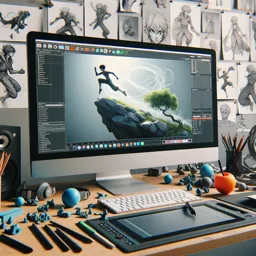Understanding the 3D Animation Pipeline
3D animation is a multifaceted process that transforms digital models and environments into dynamic, engaging moving images. While the creative possibilities are nearly endless, most 3D animation projects follow a standard workflow known as the 3D animation pipeline. Understanding each stage of this pipeline allows artists, designers, and animators to work efficiently and produce professional-quality results.
1. Pre-production: Building the Foundation
The pre-production phase focuses on planning and conceptualizing the animation. This stage establishes the creative vision and direction of the project.
Key tasks include:
- Storyboarding: Creating visual outlines of key scenes, actions, and camera angles.
- Model Sheets: Producing detailed character and prop references to maintain design consistency.
- Animatics: Developing animated storyboards to test timing, pacing, and flow before production begins.
Pre-production is essential for aligning the team on story structure, tone, visual style, and technical requirements.
2. Production: Modeling, Rigging, and Animation
This is the stage where ideas begin to take shape as 3D assets and animated sequences.
Main tasks include:
- Modeling: Creating 3D characters, props, and environments using specialized software.
- Texturing: Adding colors, materials, and surface details to models for a realistic or stylized look.
- Rigging: Constructing digital skeletons and control systems that allow characters to move naturally.
- Animation: Bringing characters to life through body movements, facial expressions, and camera actions.
- Lighting & Layout: Designing the look of each shot through virtual lighting and scene composition.
This is typically the longest and most resource-intensive stage of the pipeline.
3. Post-production: Bringing It All Together
Post-production is where the animation is rendered, polished, and prepared for delivery.
Tasks include:
- Rendering: Converting 3D scenes into 2D image sequences using lighting and visual effects.
- Compositing: Combining rendered layers, adding effects, color correction, and refining final visuals.
- Editing & Sound: Assembling the final animation with music, dialogue, and sound effects to enhance emotional impact.
Once revisions are complete and the final version is approved, the animation is ready for publishing across digital platforms or distribution.
Why Understanding the Pipeline Matters
A solid grasp of the 3D animation pipeline ensures that all stages—from planning to final output—run smoothly and professionally. Whether you’re working solo or with a team, understanding the workflow improves communication, resource planning, and creative execution.
Ready to start your 3D animation journey? Dive into each stage, study industry-standard tools, and build the skills to bring your own ideas to life!

















